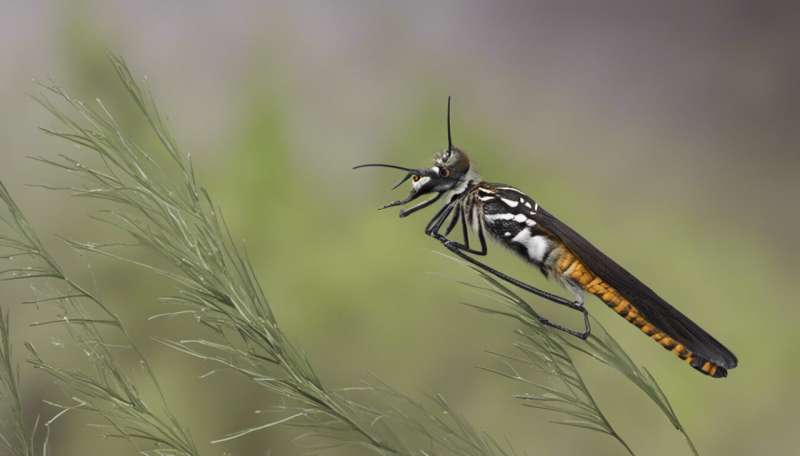Regulating biodiversity in India and Nepal

In a world marked by climate change, biodiversity is important for food security. Several international treaties regulate adaptation, access to and sharing of plant genetic resources. However, the treaties must be implemented in the laws of individual countries if they are to have an effect.
'The diversity of plant varieties is under threat. For several important food plants, a disturbing number of varieties have disappeared over the past century. There are also challenges relating to access to and sharing of benefits resulting from the use of genetic material,' says researcher and project manager Leif Christian Jensen of the Fritjof Nansen Institute (FNI).
In collaboration with researcher colleague Tone Winge, researchers from South Asia Watch on Trade, Economics and Environment (SAWTEE) in Kathmandu, Nepal, and Dr Anitha Ramanna- Pathak of India, FNI is looking into how Nepal and India manage to preserve and develop their plant genetic diversity in the research project International objectives for adaptation, access and benefit
sharing: Effects on the management of plant genetic resources in India and Nepal.
The project is funded by the NORGLOBAL programme for the period 2012–2015. The programme has a budget of about NOK four million, of which half will go to the partners in Nepal and India.
Important diversity
Wheat is not simply wheat, and maize is not simply maize. There are many different varieties of each cereal, each vegetable and each fruit, and great diversity within each variety. Preserving the genetic diversity is very important in order to develop new varieties that can meet the challenges of plant disease, natural disasters and climate change. That is why the international community has many treaties and conventions intended to safeguard this diversity.
The research project studies how India and Nepal implement the Convention on Biological Diversity and the International Treaty on Plant Genetic Resources for Food and Agriculture, and if so, how the implementation is coordinated with the countries' measures to reduce and adapt to the effects of climate change. Another relevant issue to look into is how these treaties are influenced by the countries' obligations in relation to the World Trade Organization (WTO).
Property rights and sharing
India and Nepal are members of WTO, and thus obliged to implement the Agreement on Trade Related Aspects of International Property Rights (TRIPS). This means that they have to have some form of plant variety protection, among other things. Such plant variety protection often imposes restrictions on what farmers can do with their own seeds from protected varieties, for example in terms of exchange and use.

The discussion about access to and benefit sharing from the use of plant genetic resources must be seen in connection with such limitations. 'Access to plant genetic resources is important to food security and adaptation to climate change, and failure to share the benefits can reduce willingness to facilitate access,' says researcher Winge.
Many governmental agencies
The different international treaties are often administered by different parts of a country's government administration. While the International Treaty on Plant Genetic Resources for Food and
Agriculture is usually administered by the ministry of agriculture, it is often an environmental ministry that is in charge of the Convention on Biological Diversity, and the trade and industry authorities that are responsible for the rights treaties.
This is a potential obstacle to implementation, and is therefore one of the factors that the project will consider in its analyses of the two countries' state capacity.
State capacity comprises human, financial and political/institutional resources, and can have a considerable bearing on a nation's environmental policy. 'The challenge is to implement the treaties without creating confusion in the individual countries. This often requires better coordination between different ministries, and they have to talk to each other more,' says Jensen.
India at the forefront, a lot of work left in Nepal
The research project studies how the international treaties are implemented in Nepal and India and what effect they have had so far. India was chosen because the country is a pioneer in the field. Nepal is one of the world's poorest countries, characterised by political instability. In addition, the country is already experiencing the impacts of climate change, and this is affecting its agriculture. Nepal has a rich plant genetic diversity that is well adapted to the marginal natural environments, but some of this diversity is now under pressure due to climate change.
'There are big differences between the countries. India has an active role in international negotiations and has come quite far in implementing international treaties in the form of national legislation,' says Winge.
Nepal, on the other hand, has in recent years been characterised by political instability and frequent changes of government, and has at the time of writing in autumn 2013 not succeeded in adopting a long-planned new constitution.
Dissemination of knowledge during the project
The FNI and SAWTEE researchers aim to provide a comprehensive picture of the implementation process of international treaties in the region. Communication with end users of the research is an essential activity throughout the lifespan of the project, to get them to contribute to the processes themselves, as well as to disseminate information and research results.
One important means in this work is interviews with representatives for central government and the seed industry, and with farmers, plant breeders and other researchers . Research results are disseminated through academic channels, such as scientific journals, and through channels aimed at a wider audience – for instance reports, seminars and articles in the SAWTEE magazine "Trade Insight".
'By focusing on dissemination during the project, our research can make a difference now, not just after the project is completed,' says Winge.
It is an important goal for the project to learn from India and Nepal's experiences, and to share the results with the rest of the world.
'The most important benefit I see of this research collaboration is the cross sharing of knowledge and experience among a developed (Norway), a developing (India) and a least-developed country (Nepal), based on the research that is being undertaken, which will be useful not only to these three countries concerned but also to other similar countries in the world in terms of adaptation, access, benefit sharing and management of plant genetic resources,' says Research Director Puspa Sharma of SAWTEE.
Provided by The Research Council of Norway
















